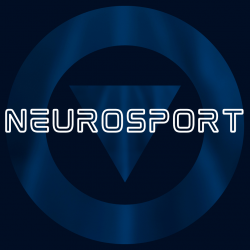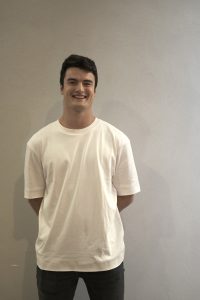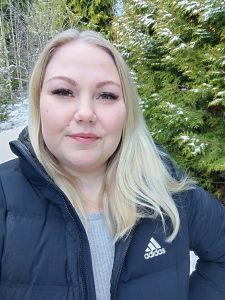The POMS test (Profile of Mood States) is a validated test by McNair et al. (1971). The test’s tables of normative values were derived from normal college students and psychiatric outpatients, but McNair et al. (1971) acknowledged the possibilities using the test also in other environments. The POMS test became an assessment tool for sport and exercise environments; until the year 2000 there were already over 200 published articles featuring POMS. The validity of using original tables of normative values in context of sport has been questioned. Researchers have been using either original tables or generating their own norms. (Terry et al., 2000)
The Profile of Mood States is a 65-item inventory with six different subscales of:
- Tension-Anxiety (range 0-36)
- Depression-Dejection (range 0-60)
- Anger-Hostility (range 0-48)
- Fatigue-Inertia (range 0-28)
- Confusion-Bewilderment (range 0-28)
- and Vigor-Activity (range 0-32)
Each mood description (for example “Friendly”) is answered by the question “How are you feeling right now?” and rated in 5-point scale between not at all (=0) to extremely (=4). The scores in each subscale and Total Mood Disturbance (TMD) are calculated with a formula. The TMD can be something between -30–200, a lower score describing better mood state. In our pilot testing we chose to use original tables of McNair et al. (1971). The mood states were assessed before and after workout, and analyised through online questionnaire by Mackenzie (2001).
According to Reigal et al. (2021) mood is positively related to physical activity. Moderate PA improves positive mood states and lowers the state of anxiety better than vigorous PA, excluding young men, who scored better when engaging in vigorous PA. The mood state is also affected by individual’s own perception of state of health, which is again related to PA. (Reigal et al., 2021) Fennell et al. (2022) found increase of PA and POMS vigor, and decrease in POMS anger and POMS depression during lockdown of covid-19, meaning better energy levels and less feelings of anger. Also TMD increased due to increased PA. Hansen et al. (2001) found in the bicycle exercise study, that PA improves levels of vigor and reduces levels of fatigue, confusion and total negative mood even after 10 minutes of exercise.
Cramer et al. (1991) used the POMS test, Daily Hassles Scale (DHS), Spielberger State Anxiety Inventory (S-Anxiety) and General Well-being Schedule (GWB) to research relationship between moderate exercise training and psychological wellbeing of women. All the other tests and scales had significant effects on the tested classifications, but POMS scores were not significantly related to exercise training. Like Terry et al. (2000) suggests, the POMS testing with normative values is not always appropriate in sport and exercise environments.
Regardless of physical activity’s positive effects to mood states and TMD scores, if the exercise is constantly too intense, there is a risk for experiencing depression caused by excessive exercise or overtraining syndrome (Peluso et al., 2005). Swenson et al. (2021) found that compared to non-skiers, long-distance skiers had a 62% lower relative risk of getting diagnosed with anxiety disorders. In Morgan et al. (1988) research the total mood disturbance increased in the ratings of depression, fatigue, and anger during heavily increased training among competitive swimmers. Berger et al. (2016) found relations between normal-distance training sessions and elevated TMD among young competitive swimmers, when after abbreviated training TMD did not change. Thus, specific subscales showed positive changes for depression, confusion and tension. O’Connor et al. (1989) findings about overtraining and significant increasing of salivary cortisol, which was correlated with depressed mood, are align with the other mentioned studies. The findings suggest that overtraining can decrease TMD and vigor, and increase other subscales of POMS. The positive effects of PA are limited to reasonable amount and intensity of exercise (Peluso et al., 2005).
References:
Berger, B. G., Prapavessis, H., Grove, J. R., & Butki, B. D. (1997). Relationship of Swimming Distance, Expectancy, and Performance to Mood States of Competitive Athletes. Perceptual and Motor Skills, 84(3_suppl), 1199–1210. https://doi.org/10.2466/pms.1997.84.3c.1199
Cramer, S.R., Nieman, D.C., Lee, J.W. (1991). The effects of moderate exercise training on psychological well-being and mood state in women. J Psychosom Res. 1991;35(4-5):437-49. PMID: 1920175. https://doi.org/10.1016/0022-3999(91)90039-q
Fennell, C., Eremus, T., Puyana, M.G., Sañudo, B. (2022) The Importance of Physical Activity to Augment Mood during COVID-19 Lockdown. Int. J. Environ. Res. Public Health. 2022, 19, 1270. https://doi.org/10.3390/ijerph19031270
Hansen, C. J., Stevens, L. C., & Coast, J. R. (2001). Exercise duration and mood state: How much is enough to feel better? Health Psychology, 20(4), 267–275. https://doi.org/10.1037/0278-6133.20.4.267
Mackenzie, B. (2001) Profile of Mood States (POMS) [WWW] Available from: https://www.brianmac.co.uk/poms.htm [Accessed 27/2/2023]
McNair, M., Lorr, M. & Droppleman, L.F. (1971). Manual for the Profile of Mood States. San Diego, CA: Educational and Industrial Testing Service.
Morgan, W. P., Costill, D. L., Flynn, M. G., Raglin, J. S., & O’Connor, P. J. (1988). Mood disturbance following increased training in swimmers. Medicine & Science in Sports & Exercise, 20(4), 408–414. https://doi.org/10.1249/00005768-198808000-00014
O’Connor, P., Morgan, W., Raglin, S., Barksdale, C., Kalin, N. (1989). Mood state and salivary cortisol levels following overtraining in female swimmers. Psych neuroendocrinology. Volume 14, Issue 4. p. 303-310. ISSN 0306-4530. https://doi.org/10.1016/0306-4530(89)90032-2
Peluso, M. & Guerra de Andrade, L. (2005). Physival activity abd mental health: the association between exercise and mood. Clinics,Volume 60, Issue 1, p. 61-70. ISSN 1807-5932. https://doi.org/10.1590/S1807-59322005000100012
Reigal, R.E., Páez-Maldonado, J.A., Pastrana-Brincones, J.L., Morillo-Baro, J.P., Hernández-Mendo, A., Morales-Sánchez, V. (2021). Physical Activity Is Related to Mood States, Anxiety State and Self-Rated Health in COVID-19 Lockdown. Sustainability, 2021, 13, 5444. https://doi.org/10.3390/su13105444
Svensson, M., Brundin, L., Erhardt, S., Hållmarker, U., James, S. & Deierborg T. (2021). Physical Activity Is Associated With Lower Long-Term Incidence of Anxiety in a Population-Based, Large-Scale Study. Front Psychiatry, Volume 12 – 2021 https://doi.org/10.3389/fpsyt.2021.714014
Terry, P. & Lane, A. (2000). Normative values for the profile of mood states for use with athletic samples, Journal of Applied Sport Psychology, 12:1, 93-109, DOI: 10.1080/10413200008404215


 Hi! I am Beñat!
Hi! I am Beñat! 
 Hi! I am Satu! I
Hi! I am Satu! I